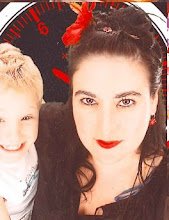
Text by Tatiana Pentes
http://www.russia.embassy.gov.au/mscw/LaraReilly.html
Lara O'Reilly, an Australian installation artist, will be residing at National Centre of Contemporary Art in June, 2007 and her works will be installed at Body Navigation III International Festival of Contemporary Arts on 14 - 18 July, 2007.
Lara O’Reilly
A film & performance installation in the Chapel of the Naval Hospital, Kronstadt,
forming part of III International festival of contemporary arts, The BODY NAVIGATION, DANCE/VIDEO/PERFORMANCE/MUSIC, 14-18 of July, 2007, St. Petersburg, RUSSIA
http://www.bodynavigation.ru/en/about/
“Anyone who wants can look at my films as into a mirror, in which he will see himself.” Andrei Tarkovsky, Sculpting in Time, p. 184.
“The installation was intended to be a highly experiential encounter with the space and with oneself. For the viewer to experience their own sense of the space and find themselves in a world between worlds…blurred between interior and exterior realms of built and natural spaces and the interior and exterior states of mind that the performance and the soundscape allude to….” Lara O’Reilly artist
In the contemporary convergent global media environment of digital networked technology, and pastische, empty parody (mimicry), O’Reilly’s ABSENCE PRESENCE returns us to the traditional notion of “multi-media”, suggestive of the shadows reflected on the walls of Plato’s allegorical Cave. The spectacular installation of ABSENCE PRESENCE, is staged on three levels and Chapel of the Naval Hospital, Kronstadt, Kotlin Island, Russia, 48km east of St Petersberg. The naval hospital was built 1717, and is the site of the earliest medical establishment in Russia. The Russian staging follows an Australian site-specific manifestation of the performance on the abandoned industrial Cockatoo Island, Sydney Cove.
O’Reilly creates for us a highly experiential and dramatic encounter, with her spatial, temporal and theatrical exploration of the rupture/suture paradox between marine and terrestrial, past and present, the outside and inside, the remote and the intimate, of seduction and abandonment, experience and the underworld. ABSENCE PRESENCE is infused with the resonance and mystery of what we feel but cannot see. In Lara’s words:
….[I felt] Kronstadt should have a very slowed choreographed movement piece. There was something about the spaces of the Chapel, the ascending movement through the spaces –I imagined that while the viewer ascended through the space, that they passed through these empty spaces as a slowed dance, a rhymic and sensual play between their own existence in the space and the lived memory of the place, a Chapel that functioned as a final farewell for the recently departed…”
The Kronstadt work integrates realtime and the simulated (cinematic) representations of the performances/movement of the bodies of five young contemporary Russian female dancers, professionally trained in classical western ballet and Japanese Butoh dance. The filmic (technological) cinematic sequences of the woman are juxtaposed with the live performance of female forms (reminiscent of netted mermaids) suspended in cocoons from the rafters, and released to move, dance and wander. The chrysalised women are “veiled and lit in a sensuous light, conjuring emotions of sadness, loss, loneliness and reverie and yet a gentle sense of security of our own stilled existence within the incredible space where we find ourselves..on an island….” The installation successfully plays with our notion of place, identity, communication, sexuality, the personal and the political, specifically with the cinematic and radiophonic allusions. The haunting tones of a live music (a cello sound piece) conjure the ghosts of the past, the dispossessed, and those who have passed from this life to the next, in these spaces, the site of the Kronstadt Revolution in the Finnish Gulf. Ironically, the waters off Kotlin Island are also the location of a modern tragic ship collision and indeed the invention of radio-location after Alexander Popov, the lauded Russian scientist (reported to have invented radio).
The filmic sequences are primarily performed by O’Reilly’s Russian model /dancer/muse Olya, in the locations of Konstantin Fort; the 300 year old Kronstadt Cemetery; and Summer Gardens. These cinematic performances are overlayed with film sequences of the ascending movement through the interior space of the Chapel and military hospital (closed in 2005), conjuring the bodies (victims) of the revolutions that passed through.


No comments:
Post a Comment